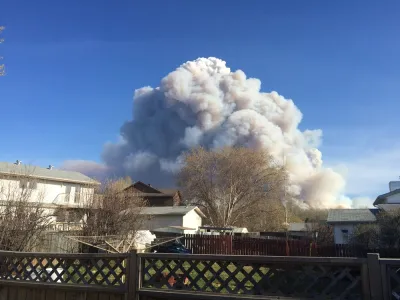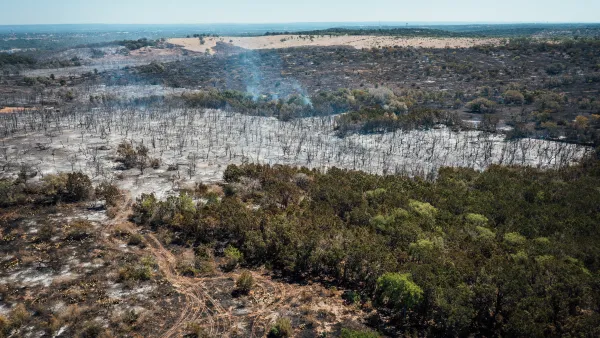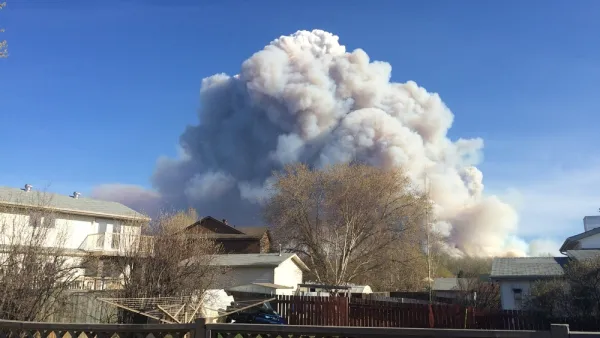Along with climate conditions, urban sprawl is intensifying wildfires and increasing the damage they do.

In light of the recent evacuations in Alberta and the seemingly never-ending fire season in California, worsening fires throughout North America have been attributed to the impacts of climate change. But Undark notes that patterns of human development can also make fires more dangerous.
For one, "the population in an area, where people live, and how many roads there are, all affect the behavior of fires and their risk to people."
More development at the edge of urban areas and wildlands could make the consequences of fires there much greater.
“For some of the problems like, home losses, or fatalities, or evacuability of our fire prone communities, or budgets — how many hundreds of millions of dollars are spent each year on fire suppression — a lot of that comes back to something that is not a fuels problem, it’s an issue of where and how we built our human developments,” [researcher Max Moritz] said.
The more of these problems the U.S. Forest Service and local fire departments have to deal with, the more resources they have to expend on each fire.
And one theory argues that the long-standing strategy of suppression—which can ultimately lead to bigger, wilder fires—also grew from the shift to fossil fuels and a new power infrastructure during the industrial revolution.
FULL STORY: The Push and Pull of Forest Fire Management

National Parks Layoffs Will Cause Communities to Lose Billions
Thousands of essential park workers were laid off this week, just before the busy spring break season.

Retro-silient?: America’s First “Eco-burb,” The Woodlands Turns 50
A master-planned community north of Houston offers lessons on green infrastructure and resilient design, but falls short of its founder’s lofty affordability and walkability goals.

Delivering for America Plan Will Downgrade Mail Service in at Least 49.5 Percent of Zip Codes
Republican and Democrat lawmakers criticize the plan for its disproportionate negative impact on rural communities.

Test News Post 1
This is a summary

Test News Headline 46
Test for the image on the front page.

Balancing Bombs and Butterflies: How the National Guard Protects a Rare Species
The National Guard at Fort Indiantown Gap uses GIS technology and land management strategies to balance military training with conservation efforts, ensuring the survival of the rare eastern regal fritillary butterfly.
Urban Design for Planners 1: Software Tools
This six-course series explores essential urban design concepts using open source software and equips planners with the tools they need to participate fully in the urban design process.
Planning for Universal Design
Learn the tools for implementing Universal Design in planning regulations.
EMC Planning Group, Inc.
Planetizen
Planetizen
Mpact (formerly Rail~Volution)
Great Falls Development Authority, Inc.
HUDs Office of Policy Development and Research
NYU Wagner Graduate School of Public Service




























